
Spanish Adjectives Emotions Spanish Bingo Game Bilingual Loteria
Mis amigos tienen miedo. My friends are afraid. The most common possible of tener to express feelings or emotions in Spanish include: tener miedo de - to be afraid of. tener sueño - to be sleepy. tener ansiedad - to live anxious. tenter celos - up be jealous. tener vergüenza - to being embarrassed. teacher calma - up be calm.
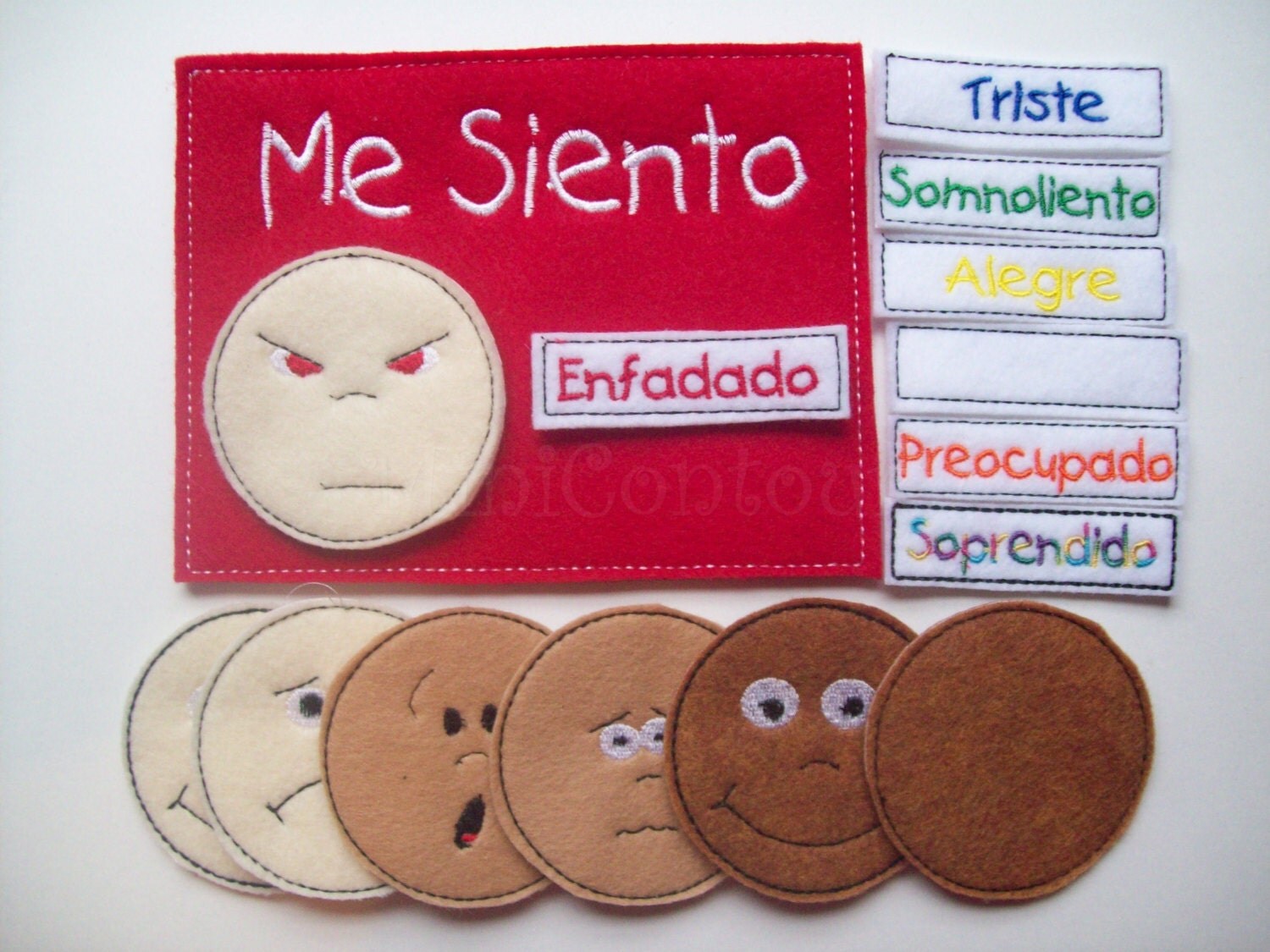
Spanish Feelings Felt Chart Emotions chart Sentimientos
Understanding the facial expressions and body cues that tend to accompany each emotional state is a fundamental social-emotional skill. Recognizing emotions in others enables us to empathize with their current plight, then respond accordingly. Printable English & Spanish Classroom Decor. This pack of printable posters is the perfect tool.

Spanish Emotions Vocabulary Word List Worksheet & Answer Key Made By
Sentir and Sentirse. Both sentir and sentirse can be translated as "to feel" in English, which makes it a handy verb for talking about feelings and emotions. But they each have a subtly different meaning: you typically use sentir to talk about what you feel, and sentirse to talk about how you feel.. Another way of thinking about this is that sentir is usually used with nouns (jealousy.

Feelings/Emotions Spanish Vocabulary Card Sort Teaching Resources
Tabla de Emociones en Español. Emociones Positivas * Alegría: contento, feliz, gozoso, dichoso, radiante * Amor: cariño, afecto, ternura, pasión, devoción.
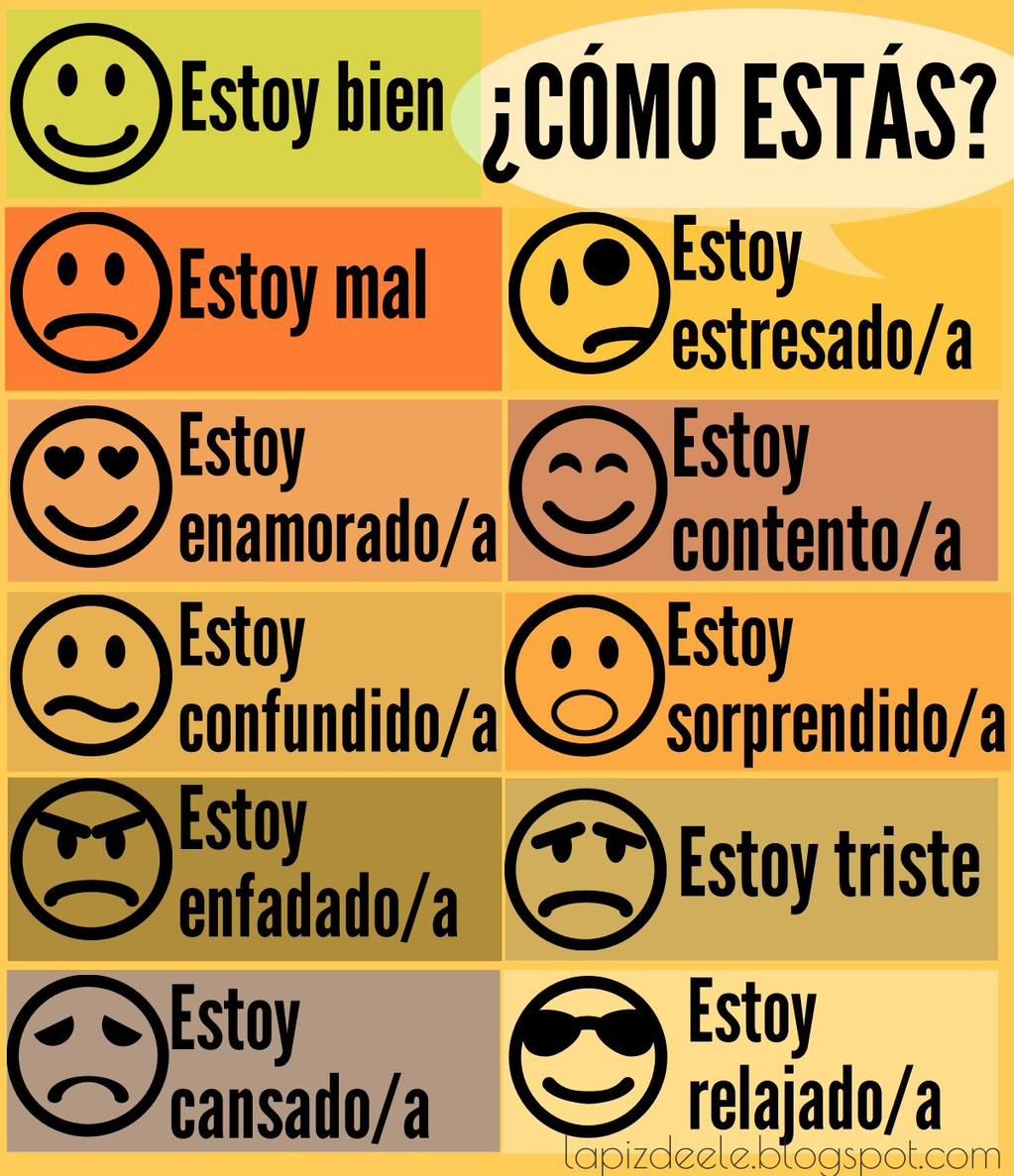
Spanish Emotions 2.9K plays Quizizz
Furious. Excited. Confused. and Surprised. The set has six cards featuring faces and words for each feeling in both English and Spanish. Plus, a set of flashcards with the faces alone and a pronunciation guide to say each Spanish word correctly! These could be really useful for kids who are learning to talk about emotions in either English or.

Printable Feelings Chart Emotions Chart Download Ocean Theme Etsy
The most common uses of tener to express feelings or emotions in Spanish include: tener miedo de - to be afraid of. tener sueño - to be sleepy. tener ansiedad - to be anxious. tener celos - to be jealous. tener vergüenza - to be embarrassed. tener calma - to be calm. tener esperanza - to have hope. tener nervios - to be nervous.
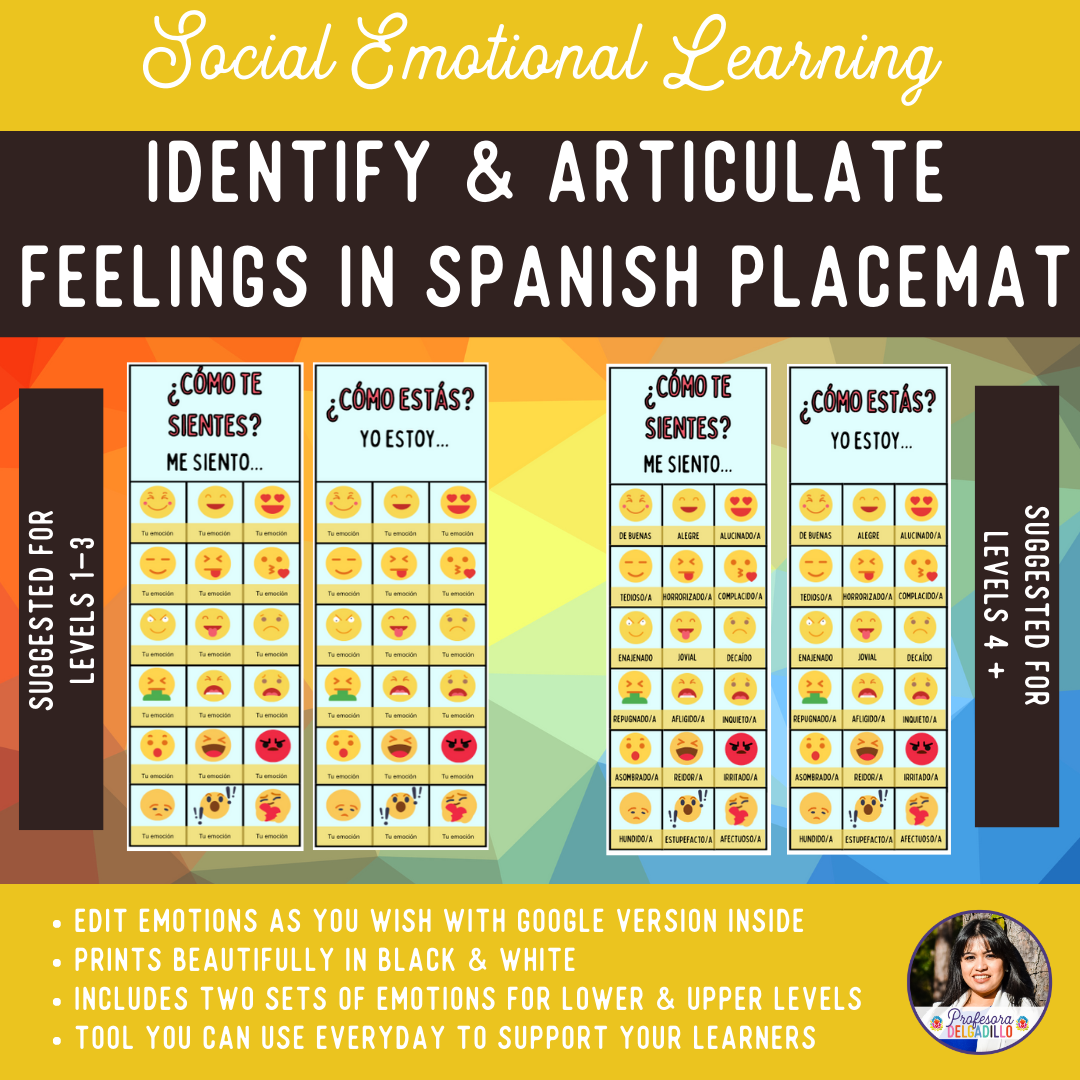
Spanish Class Ideas for After Winter Break Profesora Delgadillo
Tabla Semanal de Sentimientos. Utilicen esta tabla semanal de sentimientos para hablar con su niño sobre sus sentimientos y emociones. Haga que su niño trace una palomita, un corazón o una estrella en cada casilla correspondiente a su sentimiento. Luego, tómese un tiempo para reflexionar con su niño sobre por qué se siente de una manera.

Spanish Emotions Printables for Kids The Chaos and the Clutter
Talking about your emotions in any language can be tough. Having the right vocabulary is a good first step, though. Being able to communicate how you're feeling is a great way to connect with others, which can make your language-learning experience a lot less lonely when you're first starting out.We collected some basic vocabulary for emotions and feelings in Spanish, which will help you.

557 best images about Feelings Activities on Pinterest Emotion faces
Expressing feelings and emotions in Spanish with ESTAR. First, words that are used to describe features or state are all Spanish adjectives.For the purpose of expressing feelings and emotions in Spanish, it is necessary to understand the basics to use adjectives, which in this case are words like "enojado" and that can suffer a few variations while talking about a subject,e.g. "enojado.

Colorful Printable Emotions Chart for Kids in English, Spanish and
In this kit of 24 bilingual Spanish/English emotions flashcards you will receive a 24 watercolor emoji emotions cards. *All of the emotion adjectives are in masculine form. Remember to change the form of these words according to the gender. To talk about these phrases, you can use the verbs estar + adjective, or sentirse + adjective.
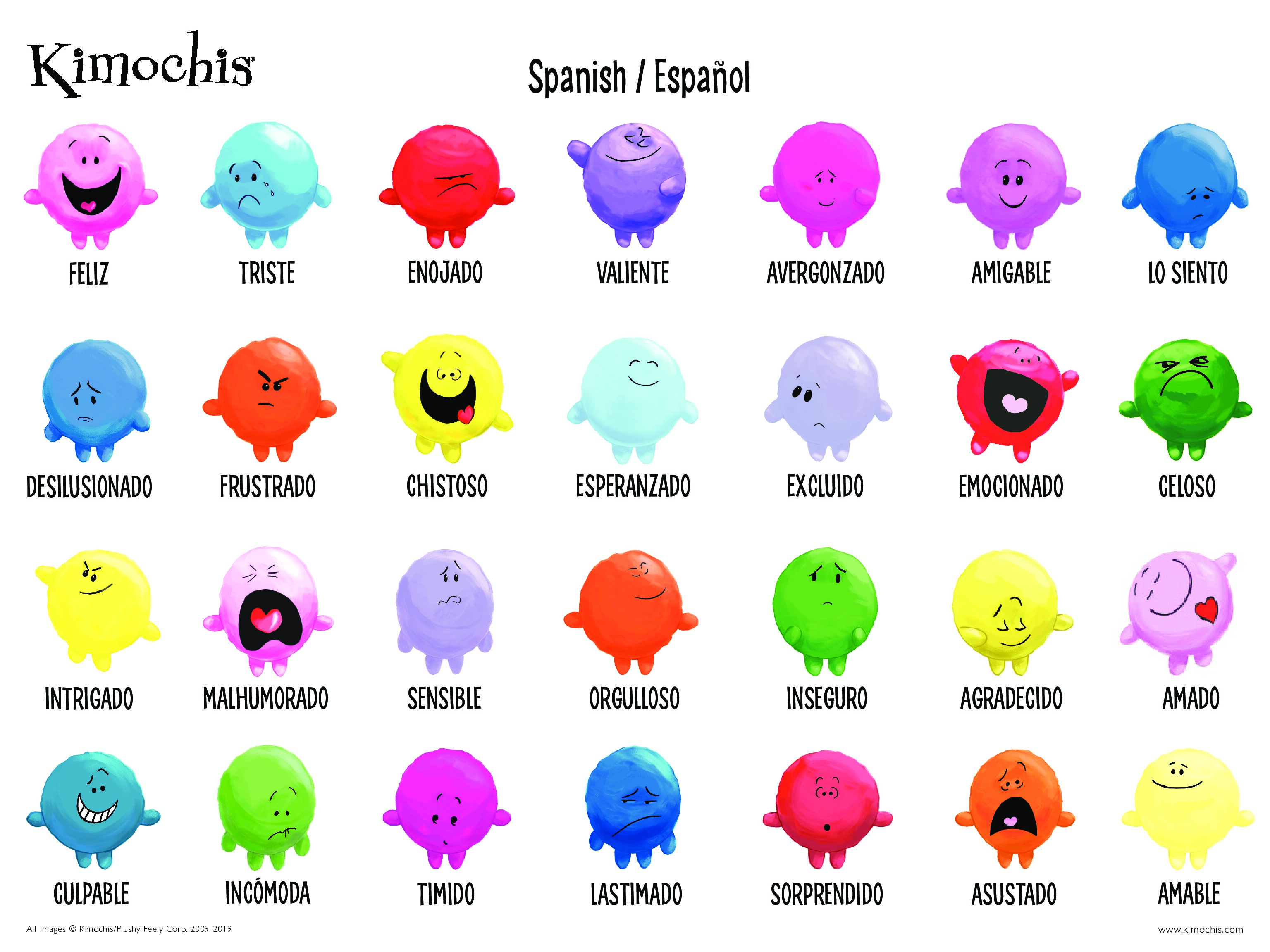
Feeling Chart Spanish Trending Favorably
- The intensity of an emotion can be expressed using adverbs such as "muy" (very), "bastante" (quite), or "algo" (somewhat). - Emotions can be expressed in the present, past, or future tense. - Emotions can be used to describe people, places, things, or situations.

Spanish Feelings Check for school counseling. This feelings check is
True mastery of the feelings and emotions in Spanish will allow you to: Make deeper connections by expressing your feelings more accurately. Set personal and professional boundaries by communicating how you really feel. Ask someone how they're doing. Describe objects and situations in terms of how they make you feel.

Smart Poly Spanish Chart, 13" x 19", Emoji, Cómo te sientes hoy? (How
Stressed. Below, we're going to list four common ways to express the above emotions or feelings. 1) Using Estar and Tener. The verb Estar (to be) is used to talk about temporary situations, and in this context, we should remember that it's also used to express feelings - the same way we use the English equivalent.
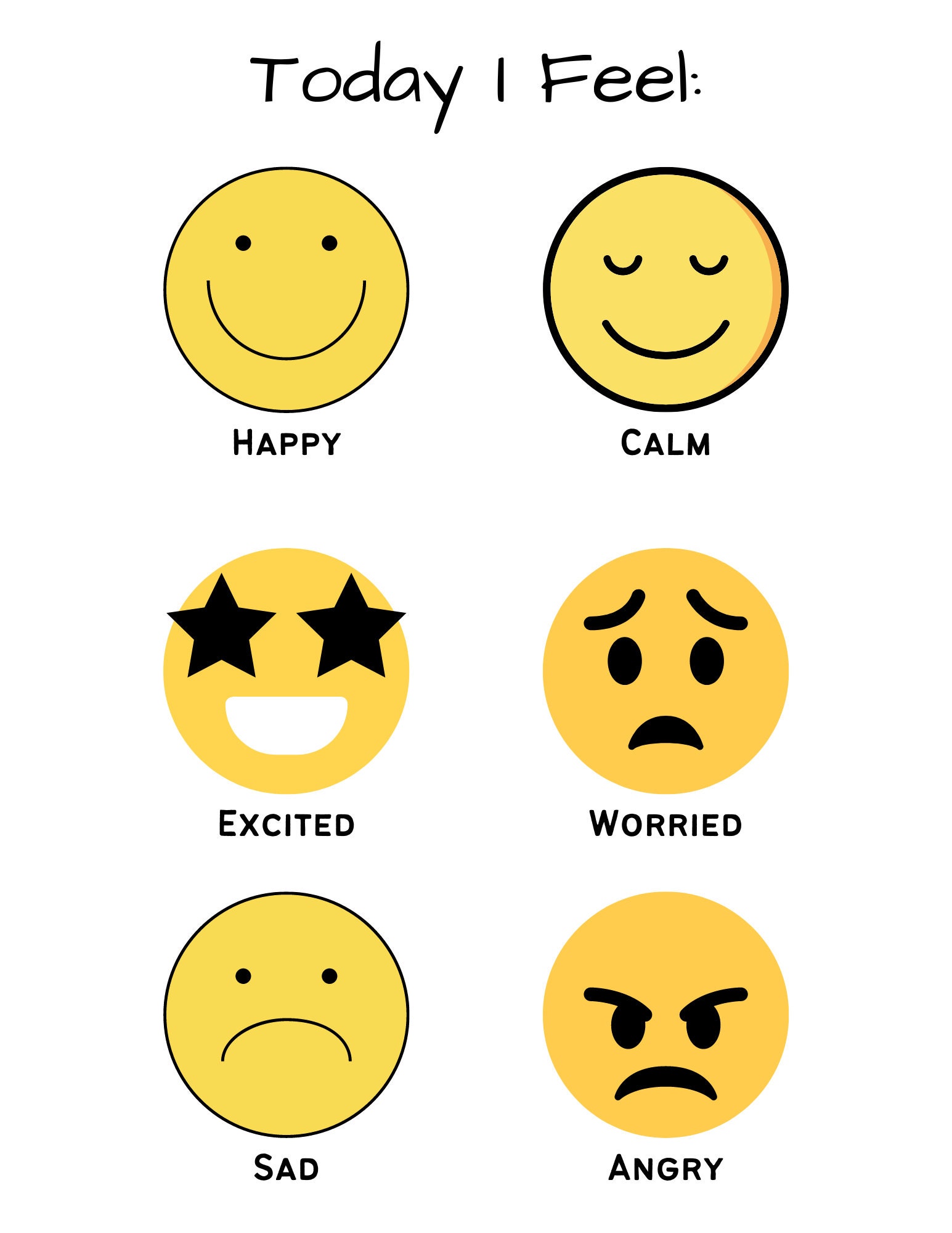
Emotions Chart Feelings Chart Toddlers Preschoolers Etsy
Emotions Chart Spanish. 5 reviews. Spanish Topics All About Me. Free Account Includes:. Emotions Chart A4 Display Poster English/Spanish. Juego: Emociones con emojis. Emotions Word Cards English/Spanish. Póster DIN A4: Las emociones y los sentimientos. How Am I Feeling? Emotions Cards.

SPANISH EMOTIONS POSTER Emotions posters, Sign language interpreter
English-Spanish Vocabulary List Ma n y o f u s t h i n k t h a t "f e e l i n g s" ( l o s s e n t i mi e n t o s ) a n d "e mo t i o n s" ( l a s e mo ci o n e s ) a re t h e sa me , b u t t h e y a re a ct u a l l y d i f f e re n t .

Emotions & Feelings in Spanish Basic Spanish Vocabulary [Infographic]
Spanish adjectives that use the verb 'tener'. Just when you thought you've seen it all, now we're talking about adjectives used to express emotions and feelings that use the verb 'tener' meaning 'to have'. Instead of saying 'me siento' which translates to 'I feel', you'd say 'tengo' meaning 'I have'.